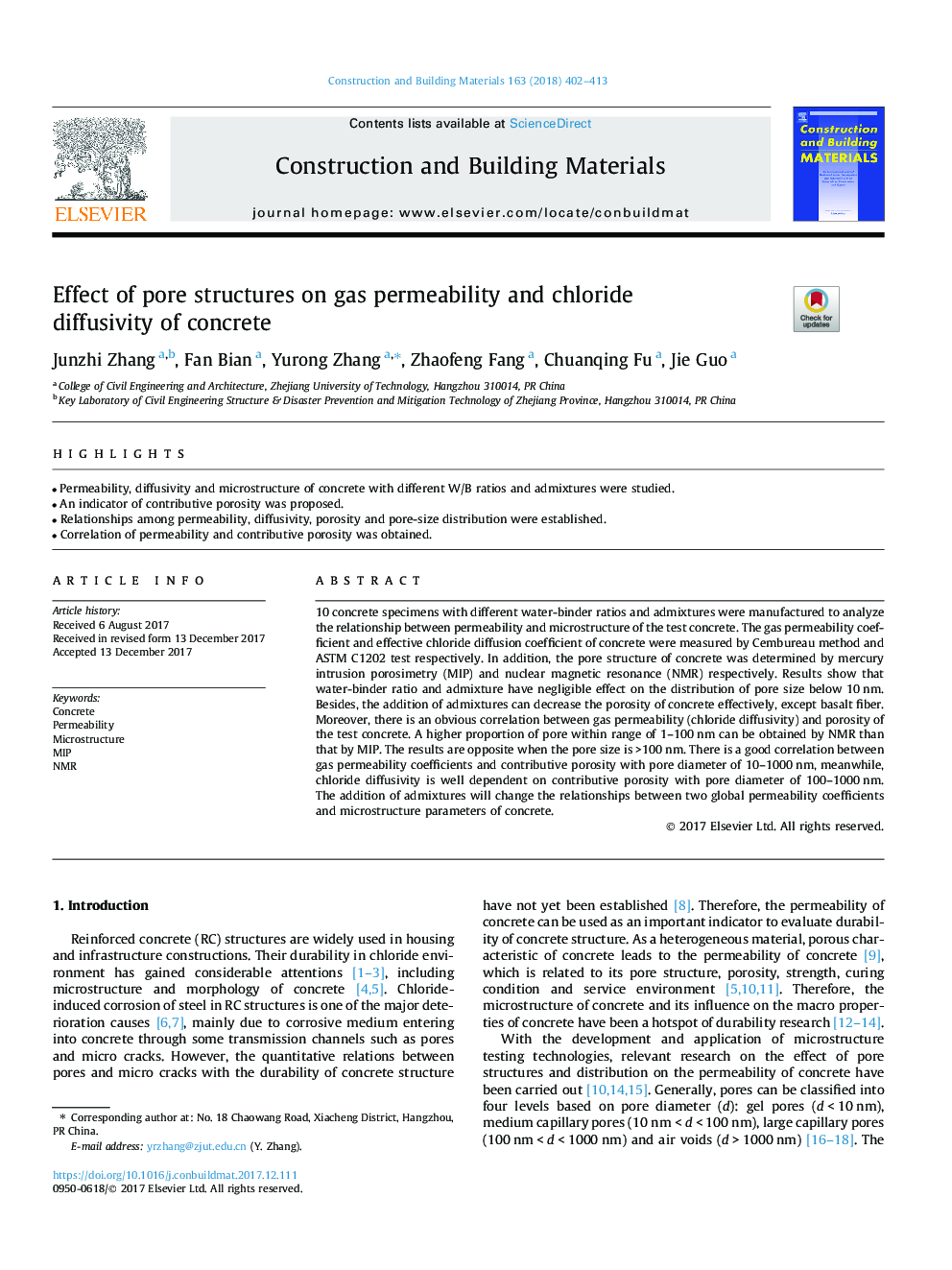| Article ID | Journal | Published Year | Pages | File Type |
|---|---|---|---|---|
| 6716237 | Construction and Building Materials | 2018 | 12 Pages |
Abstract
10 concrete specimens with different water-binder ratios and admixtures were manufactured to analyze the relationship between permeability and microstructure of the test concrete. The gas permeability coefficient and effective chloride diffusion coefficient of concrete were measured by Cembureau method and ASTM C1202 test respectively. In addition, the pore structure of concrete was determined by mercury intrusion porosimetry (MIP) and nuclear magnetic resonance (NMR) respectively. Results show that water-binder ratio and admixture have negligible effect on the distribution of pore size below 10â¯nm. Besides, the addition of admixtures can decrease the porosity of concrete effectively, except basalt fiber. Moreover, there is an obvious correlation between gas permeability (chloride diffusivity) and porosity of the test concrete. A higher proportion of pore within range of 1-100â¯nm can be obtained by NMR than that by MIP. The results are opposite when the pore size is >100â¯nm. There is a good correlation between gas permeability coefficients and contributive porosity with pore diameter of 10-1000â¯nm, meanwhile, chloride diffusivity is well dependent on contributive porosity with pore diameter of 100-1000â¯nm. The addition of admixtures will change the relationships between two global permeability coefficients and microstructure parameters of concrete.
Related Topics
Physical Sciences and Engineering
Engineering
Civil and Structural Engineering
Authors
Junzhi Zhang, Fan Bian, Yurong Zhang, Zhaofeng Fang, Chuanqing Fu, Jie Guo,
